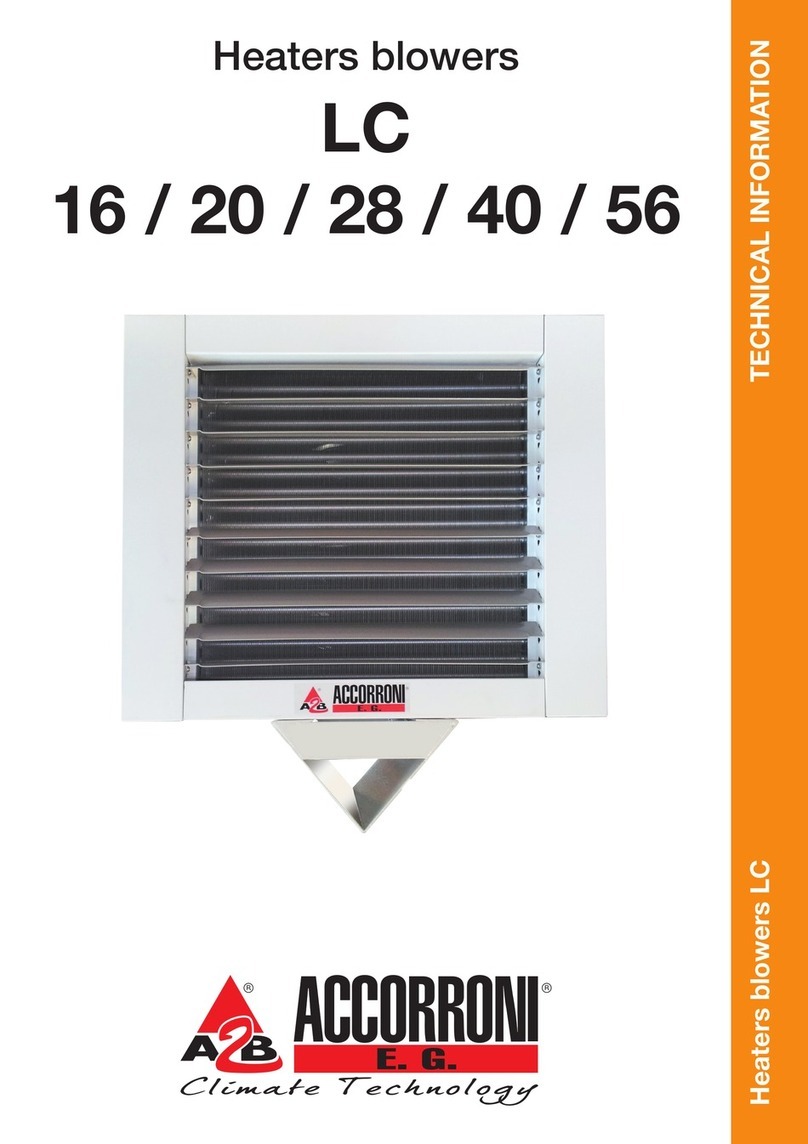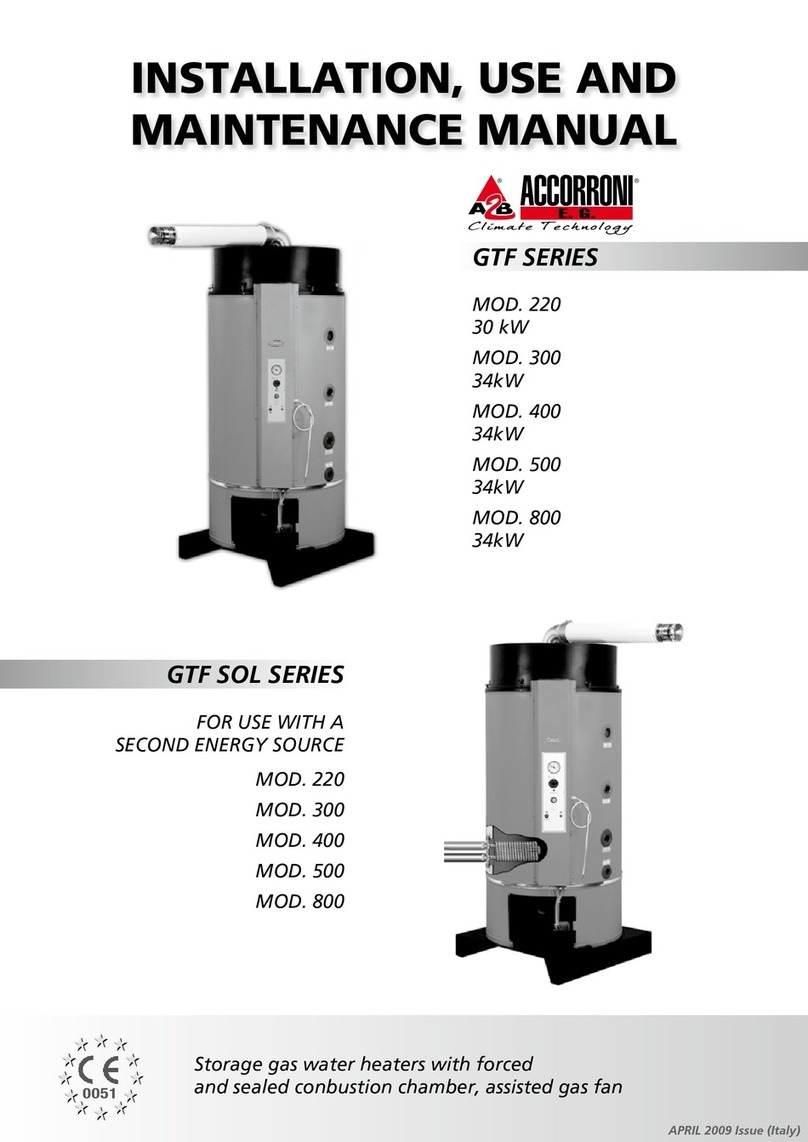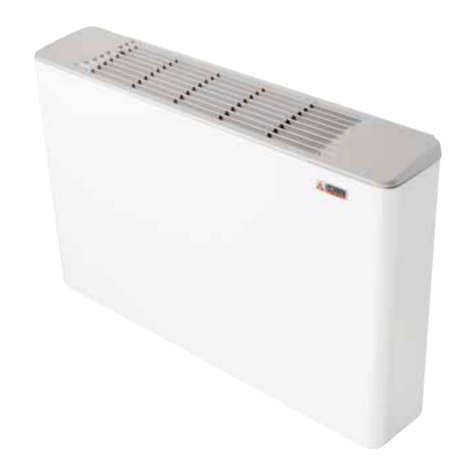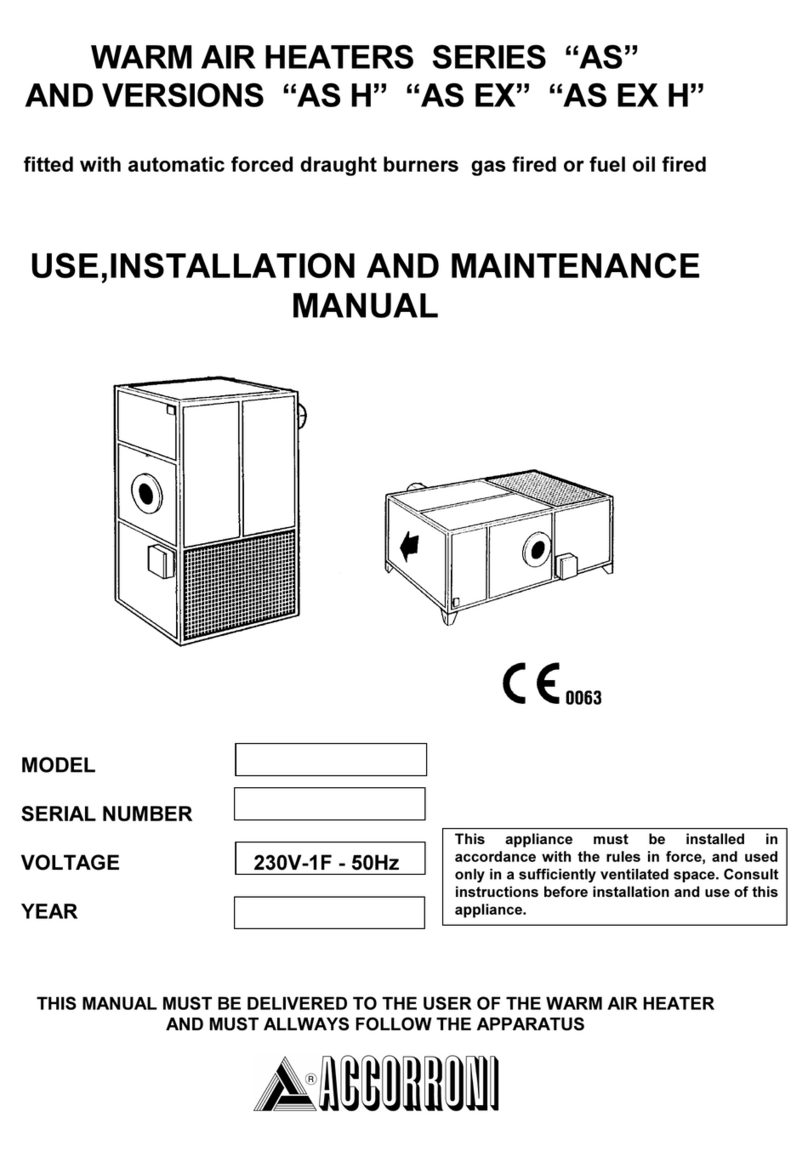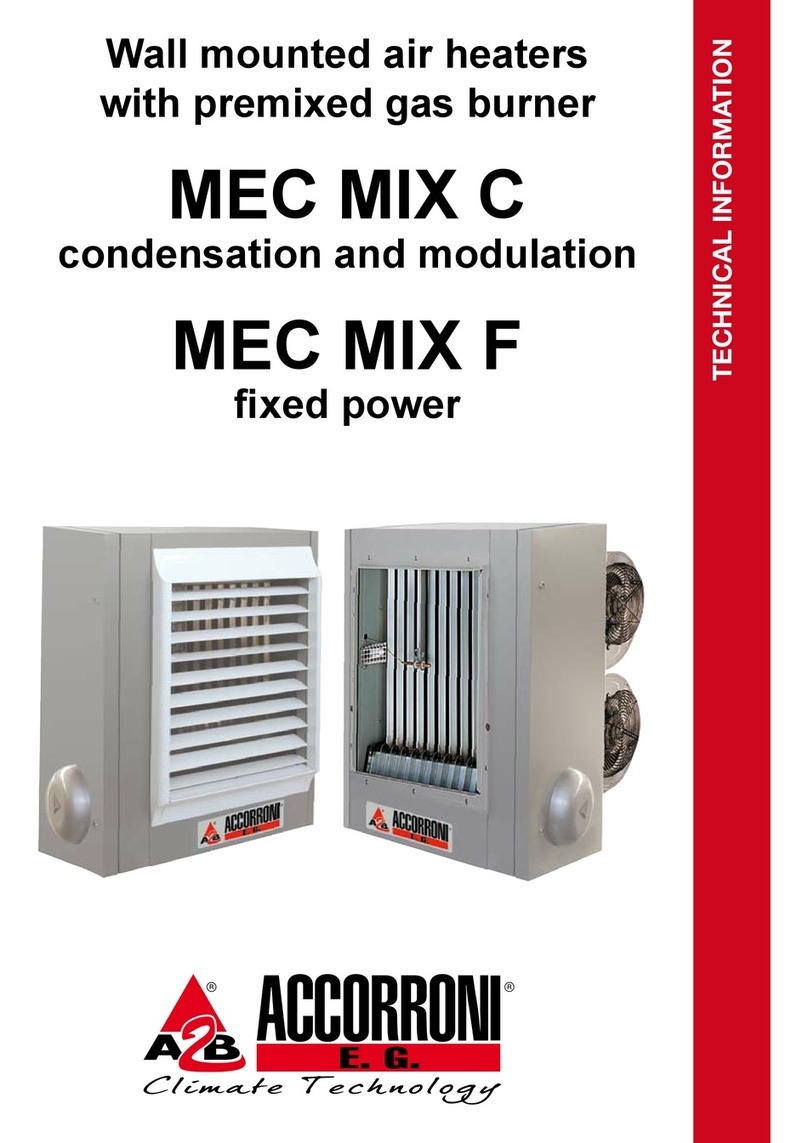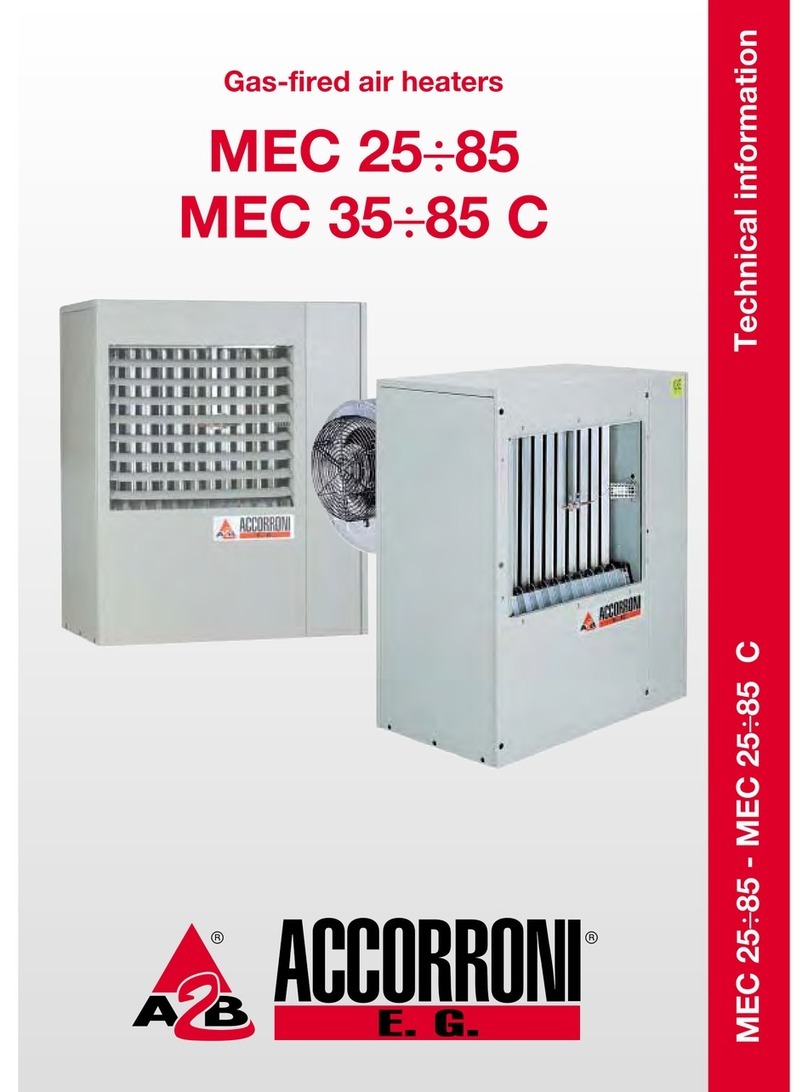page 4
SECTION 1 - GENERAL INFORMATION
1. PRINCIPAL CHARACTERISTICS
1.1 APPLIANCE CLASSIFICATION
These appliance are defined as “Independent
gas-fired convection heaters incorporating a fan
to assist transportation of combustion air and
flue gases”.
In addition, they are classified according to
harmonised European standards EN 437 and
EN 1266 into:
category - according to the types of gas, at the
different supply pressures, that they can use;
type - according to the possible methods to
exhaust the combustion productions (see also
4.2.1).
1) Category II2H3+
the heater is suitable to use gas that belongs to
two families. The atmospheric burner can be fed
with gas from the second group (natural gas -
group H) and gas from the third group (butane
and propane at the two pressure ratings 28-30
and 37 mbar)
2) Type C12
The combustion circuit is sealed with respect to
the environment in which it is installed and the
combustion air supply and combustion product
exhaust lines are connected outside the room by
means of flues which pass directly through the
outside wall of the room.
3) Type C52
The combustion circuit is hermetically sealed with
respect to the environment in which it is installed
and the combustion air supply and combustion
product exhaust lines are connected outside the
room by means of separate ducts with terminals
which need not necessarily be adjacent to each
other. (In this case, a special accessory shall be
used which is supplied on request).
1.2 CERTIFICATION - EC MARKING
The Ghibli air heaters, as previously described
and classified, have obtained the "CE type test
certificate" in conformity with EEC Directive 90/
396 and with reference to the harmonised
European standard EN 1266. Attaching the CE
marking shown below also guarantees that the
appliance conforms with EEC directive 2006/95
("Low voltage") through the harmonised standard
EN 60335-1 and EEC directive 2004/108
("Electromagnetic compatibility") through the
standards EN 50081-1 and 50082-1.
It is important to point out that, to protect the end
user, attaching the CE marking means that the
manufacturer must submit a declaration of
conformity for the entire line of products with the
certified characteristics and performance ratings.
This is possible through the use, by the
manufacturer, of a Quality Assurance system.
The efficiency of that system is controlled by the
Organisation which issued the certification.
1.3 FUNCTIONAL DESCRIPTION
The Ghibli air heater consists basically of a heat
exchanger unit which exchanges heat between
the combustion products of a gas burner and the
air flow delivered by a fan.
The technology used to build the burner also
ensures very low emission of polluting NOx
(nitrogen oxides) for this category of appliance.
The fan takes in the room air which is then
heated as it passes through the heat exchanger.
The warm air is discharged directly into the
environment through the grille located at the top
of the appliance.
Fan operation is controlled by a thermostat: to
prevent cold air from entering the environment.
The fan begins operating shortly after the burner
has ignited. The fan runs for a short time after the
burner is extinguished, to allow the exchanger to
cool off gradually.
In case of malfunction or if the fan does not turn
on and the exchanger overheats, a safety
thermostat trips and cuts off the gas flow to the
burner.
The combustion products are exhausted
outdoors by a centrifugal fan installed after the
hermetically sealed combustion circuit. The
combustion chamber always has a lower
pressure with respect to the environment, thus
providing an additional safety feature.


















